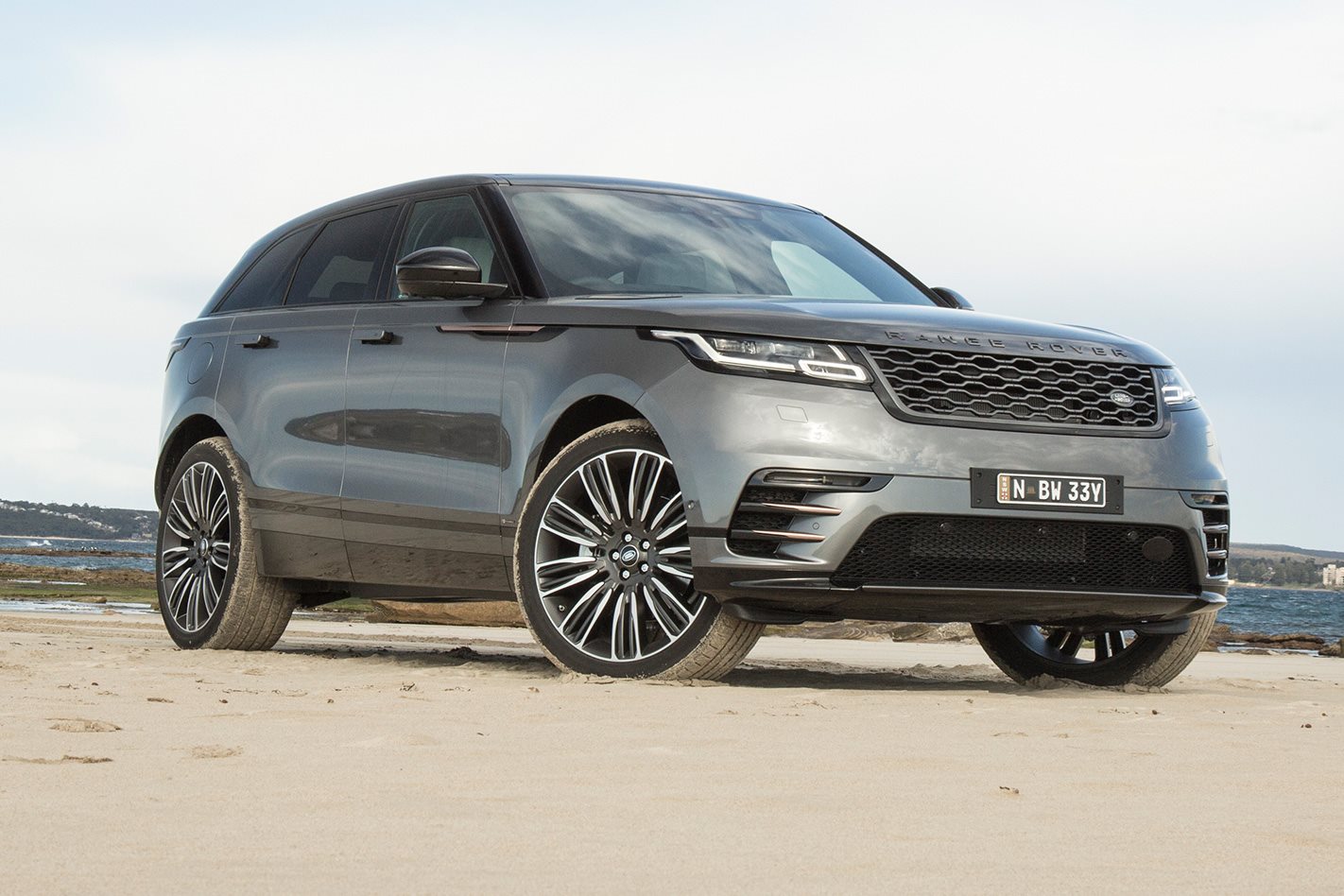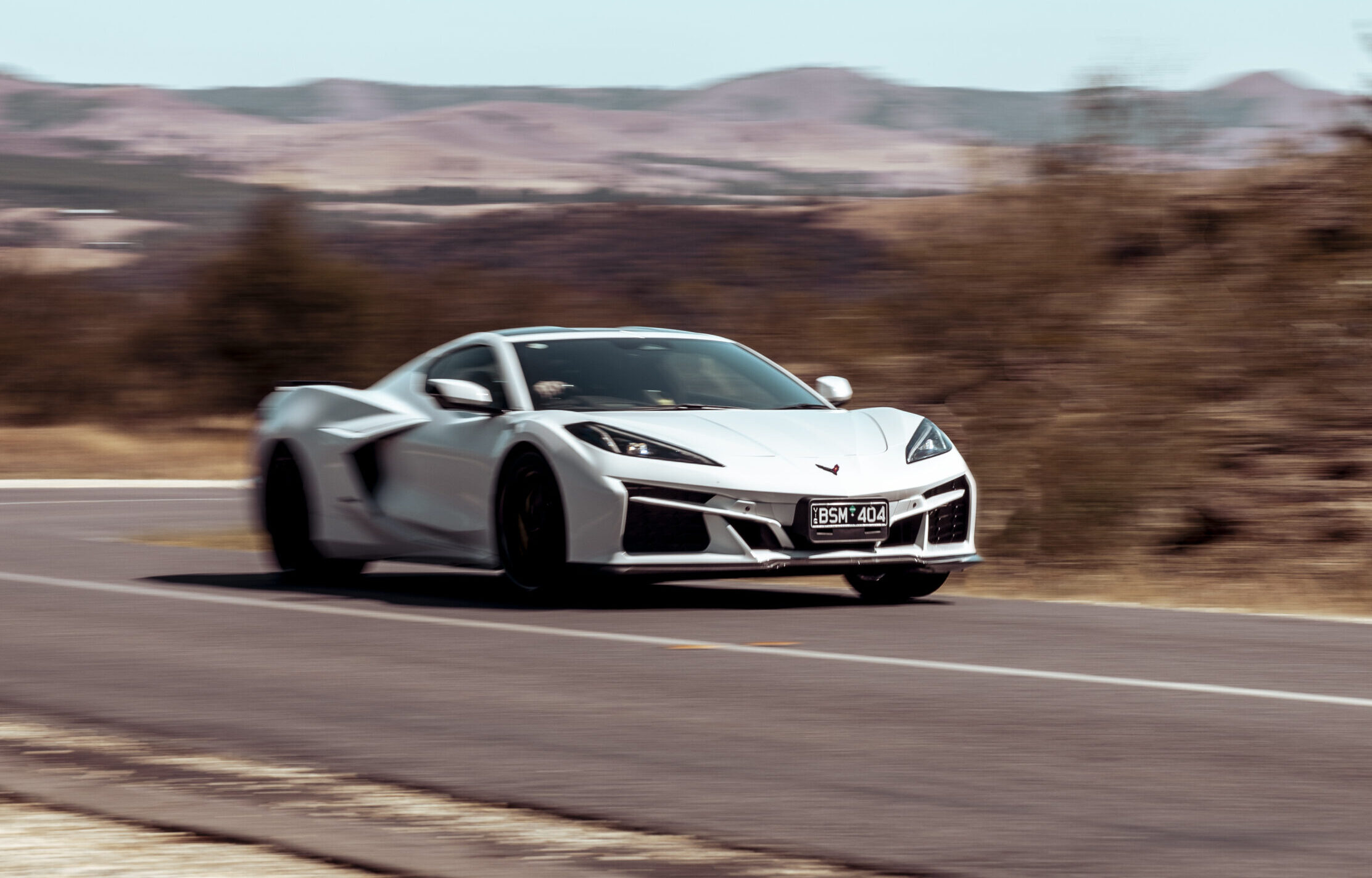WHAT IS IT?
Another premium-medium SUV slayer from the same crew responsible for last year’s Jaguar F-Pace. What that means is a shared D7A platform, aluminium panels, the same 2874mm wheelbase as an F-Pace and a near-identical drivetrain line-up to its Jag cousin. Except that the Velar errs more towards luxury than sports.
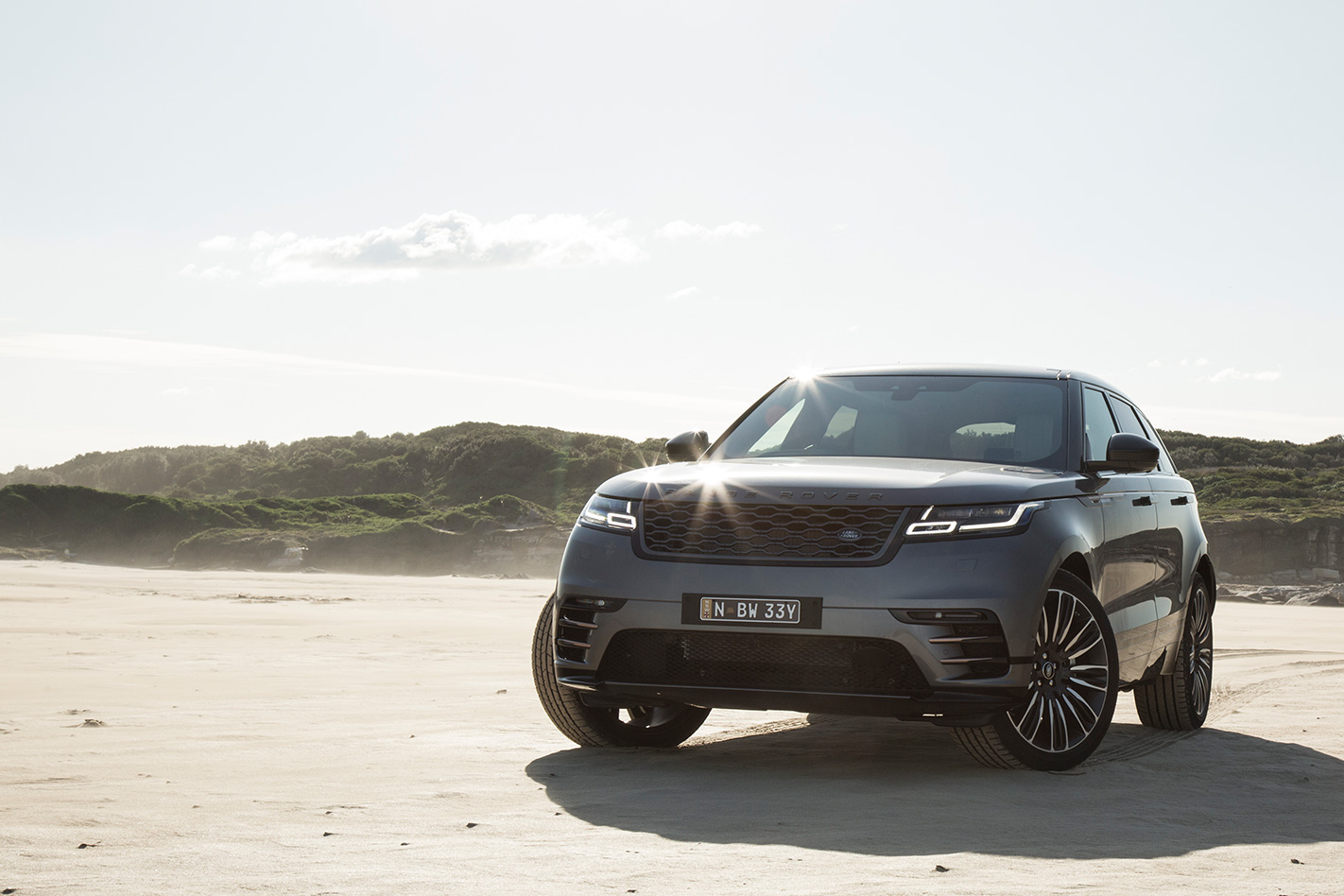
Having not attended the Velar’s northern-hemisphere launch, this is our first taste of the latest (and, in some areas, greatest) Range Rover, both on- and off-road. But it’s the Velar’s clean-edged styling and high-end interior that take precedence here.
MAIN RIVALS
Audi Q5, BMW X3 and X4, Jaguar F-Pace, Lexus NX and RX, Mercedes-Benz GLC and Porsche Macan.
THE WHEELS VERDICT
Concept-car in look and almost hand-crafted in cabin feel, the vaunted Velar raises the game for a Range Rover model in terms of luxury and personalisation. It’s a very pleasant drive, too, proving easy to place, keen to hug corners, and reasonably comfortable to ride in if the air suspension’s set-up screen reads ‘Comfort’. It’s not as sporty as an F-Pace but the Velar blows its relative away in all the areas that will impact most in Double Bay and Toorak.
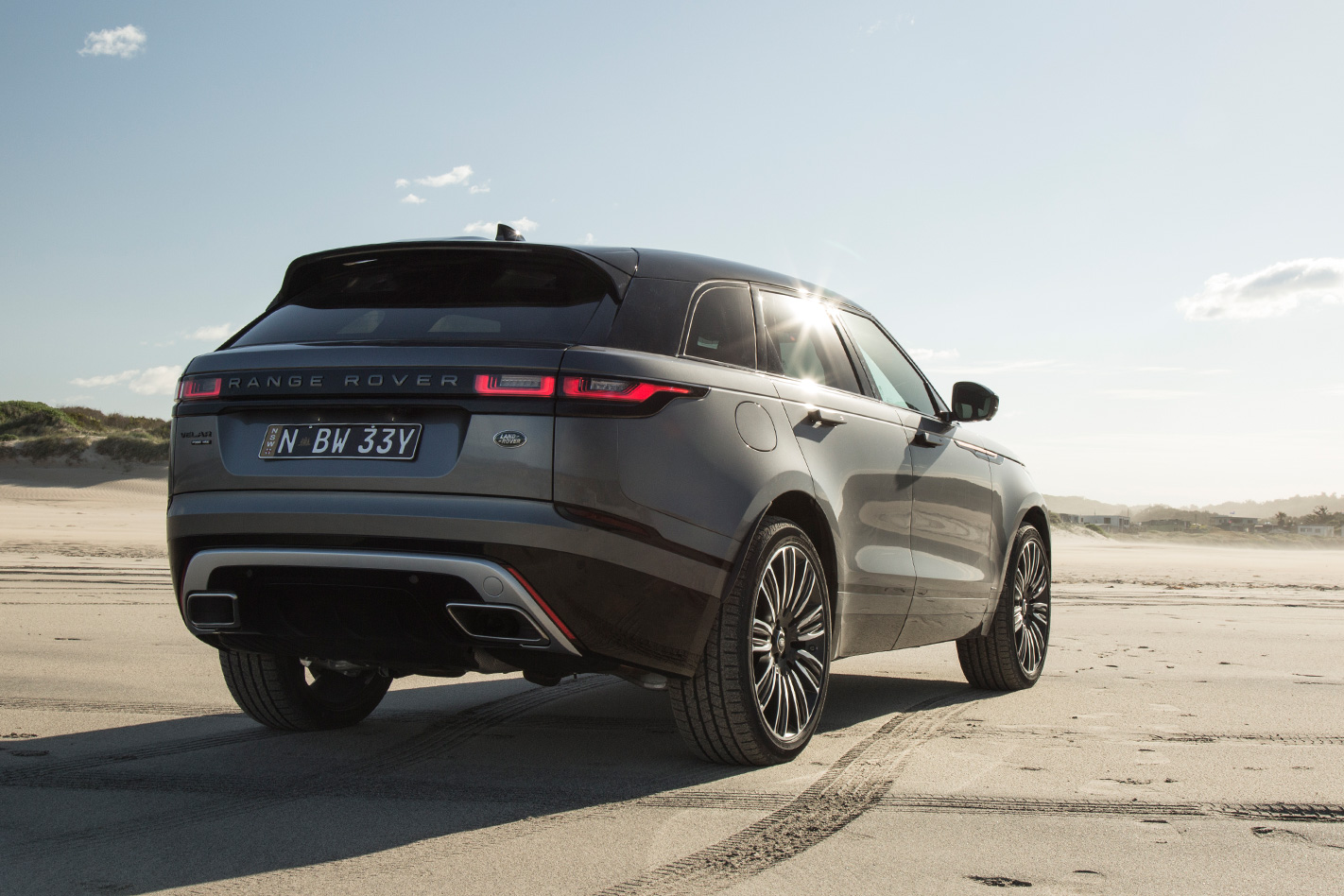
THE WHEELS REVIEW
IF THE hugely successful Evoque prepared a brand-obsessed world for a bitumen-based Range Rover, then no one will have a problem with the Velar. Styled just like a concept car and finished to an even higher standard than its larger, more expensive siblings, the Rangie Velar could be just what the Doctor orders in Australia’s blue-ribbon locales.
Sharing the Jaguar F-Pace’s D7A architecture and even its 2874mm wheelbase, the Velar delivers a counterpoint to its more overtly sporting British brother. Built alongside the F-Pace in Land Rover’s freshly fitted-out factory in Solihull, at 4803mm long, the Velar out-measures every SUV in its premium-medium category (and even has the biggest boot, at 558 litres), thereby delivering serious driveway presence for what appears to be a relatively modest $70,662 starting price.
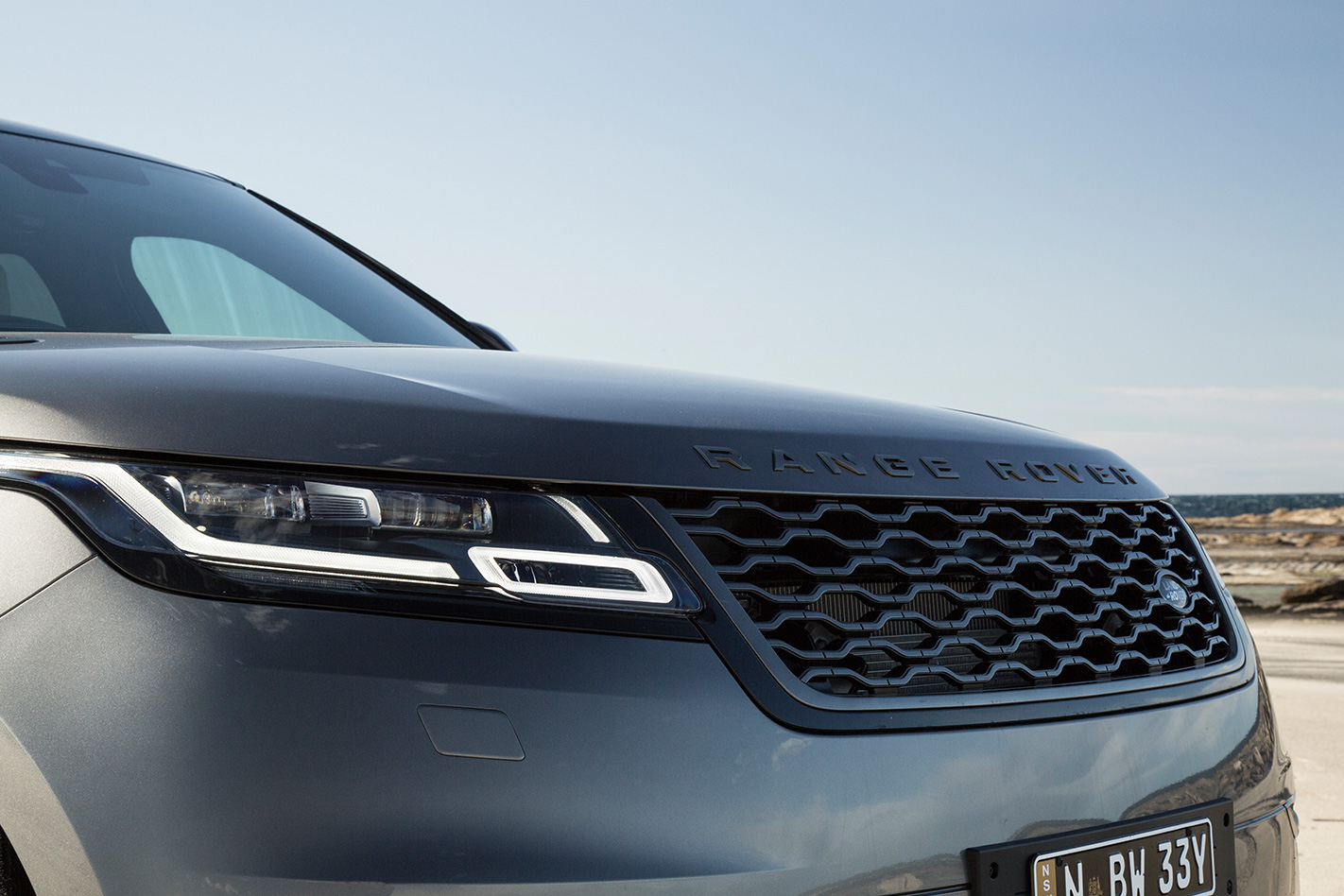
In between sits a refreshingly democratic, but ultimately fairly complex model line-up. Essentially, you start with either a Velar or a Velar R-Dynamic (with a more aggressive front bumper, bonnet scoops and in-vogue copper detailing), then move up the ladder. There’s familiar S, SE and HSE equipment levels, but the beauty with the Velar is, you could potentially have the full 5.7sec-to-100 snot of a P380 blown V6 in a boggo white Velar on standard standard-issue state plates ($93,462), or one of the four-pot diesels or petrols in fancy HSE guise with 21-inch wheels and the full glamour interior ($106,962 to $117,250).
Additional options are grouped in a series of packs – three for the standard Velar and a single Black Pack for the R-Dynamic ($2180) – yet there’s a bewildering (and also wonderful) 17 different wheel choices, including four 21- and four 22-inch options. That’s a veritable cache of concept-car-esque choices and not one of them is a munter.
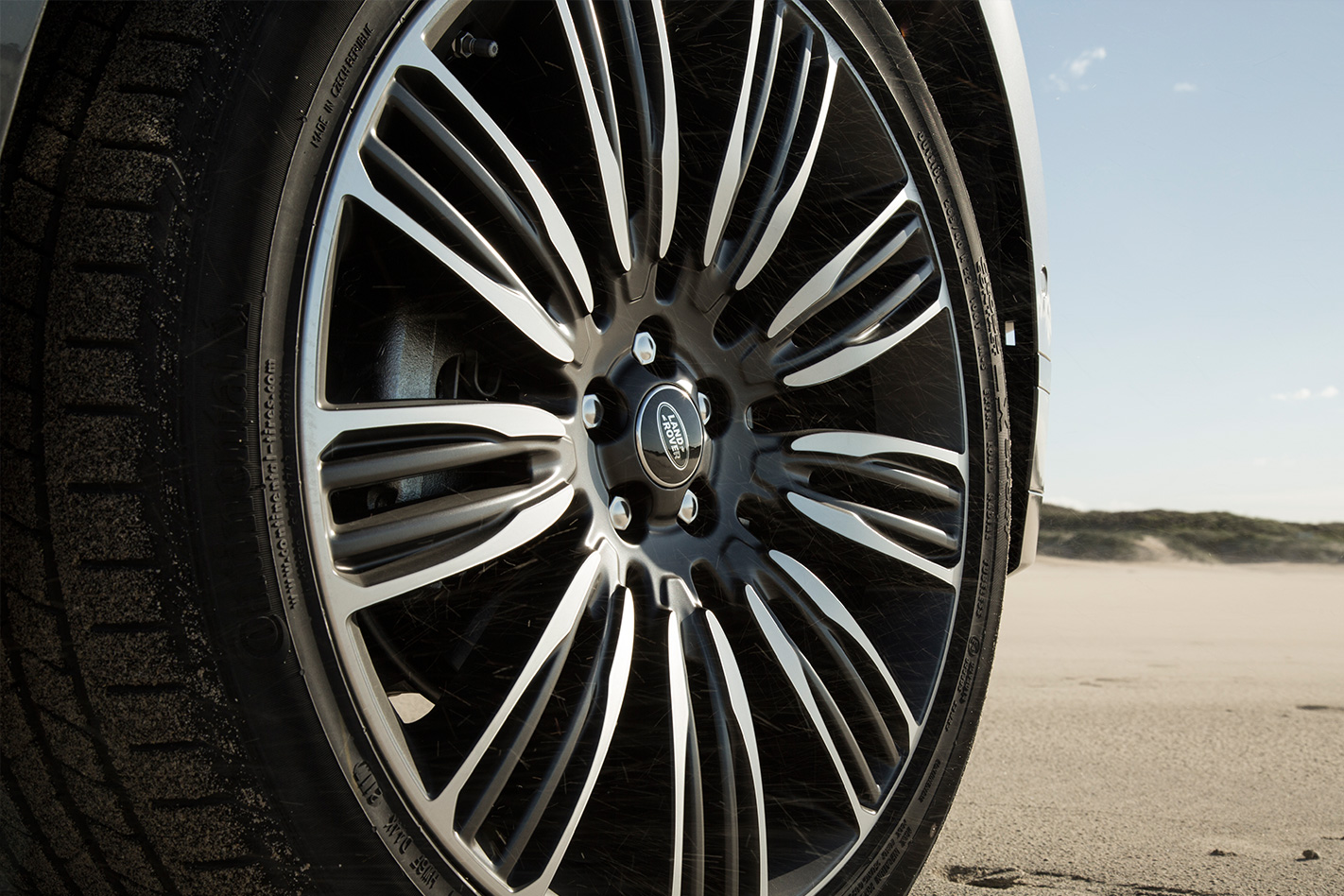
Even the four-pot diesel is smooth and incredibly tractable, as happy lugging along at 1200rpm as it is kissing the four-five upshift point decisively selecting the next of eight ratios. There’s noticeable lag if you simply flatten the throttle off the line, though the D240 Velar is pleasantly responsive in general driving, as its claimed 7.3sec 0-100km/h time would suggest.
The twin-turbo D300 drops that time to 6.5sec and adds a considerable amount of additional urge. It has greater swagger to its fuller induction sound, too, though the performance honours obviously go to the supercharged petrol. With snappy gearing and an elastic power delivery, the P380 puts the Velar’s air-suspended chassis to best use, despite having to lug 1884kg.

Indeed, get the nose in, then give the Velar P380 some gas and, like its F-Pace relative, the blown Velar will drift its back end slightly, as a demonstration of this platform’s rear-drive bias. It’s a fun thing to hustle, which bodes well for the inevitable SVR version rumoured to follow in 2018, complete with a bent-eight under the bonnet.
Pity the Velar’s ride isn’t quite as accomplished. Only with the air suspension set to Comfort does it begin to cosset passengers properly (even wearing 22s). In Auto or Dynamic, the Velar rides much more firmly, though to the ultimate benefit of its overall agility. And with the air-sprung set-up, you can raise the Velar to offer 251mm of ground clearance, plus a 650mm wading depth. The coil-sprung four-cylinder versions offer 213mm and 600mm respectively.

They’ll be more concerned with its beautiful interior, and 10 inches layer-upon-layer ‘Touch Pro Duo’ which fulfil multimedia requirements in the upper section and stuff like climate control in the gorgeous lower screen. It’s a high-end look for this screen-savvy era, prefiguring a look that is bound to permeate pricier Range Rovers in the not-too-distant future.
Despite being the lowest Range Rover to date, the Velar offers a pretty commanding driving position on comfortable and beautifully trimmed buckets, and while the rear bench is only really suitable for two adults, legroom (if not toe room) is competitive and vision ain’t bad. On some Velars we drove, the rear backrests could be electrically adjusted for rake.
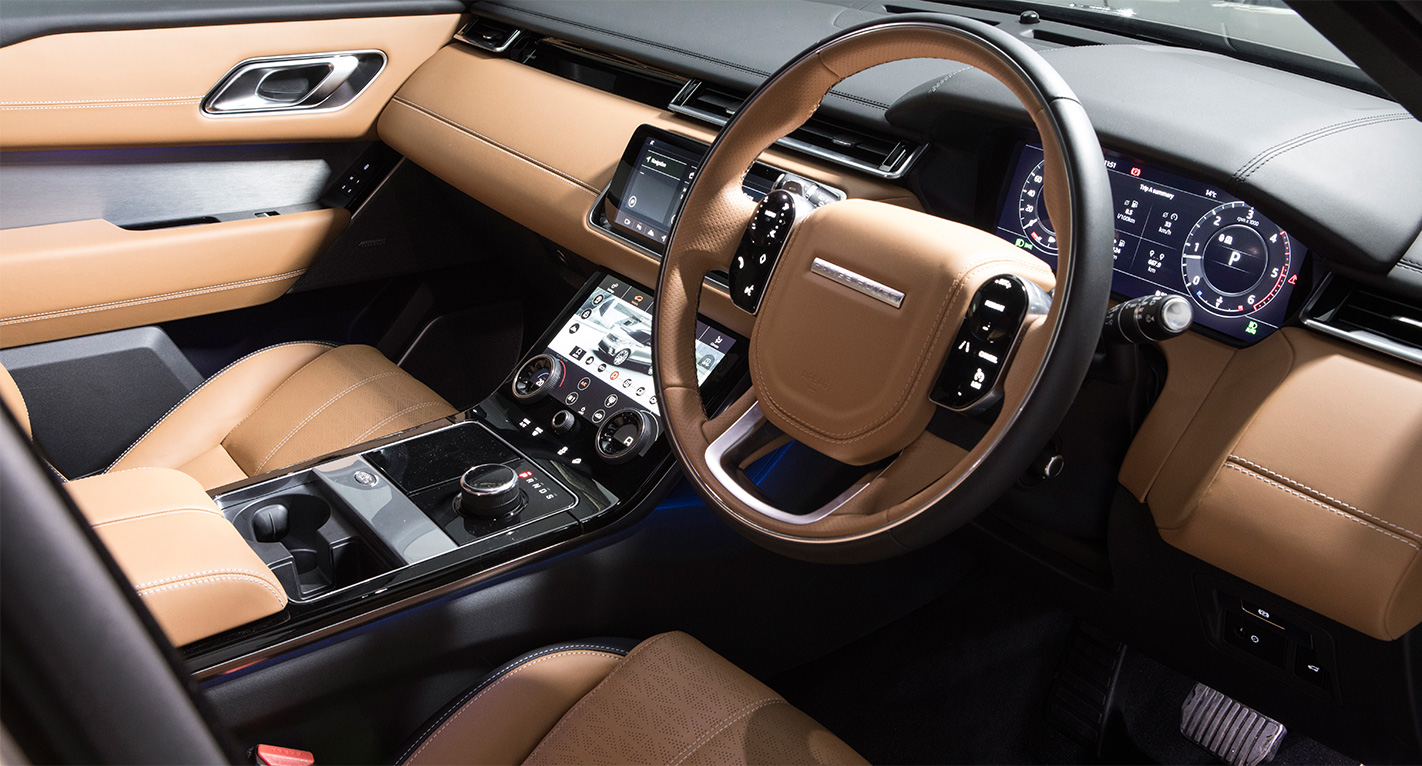
That said, a white P380 on 18s has a taxi-pack appeal that could beautifully subvert the almost fanatical level of features and finish that the Range Rover Velar delivers.
Vote for the Range Rover Velar to win the 2018 Wheels Car of the Year Readers’ Choice competition
SPECS
Model: Range Rover Velar P380 First Edition Engine: 2995cc V6, dohc, 24v, S/C Max power: 280kW @ 6500rpm Max torque: 450Nm @ 4500rpm Transmission: 8-speed automatic Weight: 1884kg 0-100km/h: 5.7sec (claimed) Economy: 9.4L/100km Price: $168,862 On sale: Now

